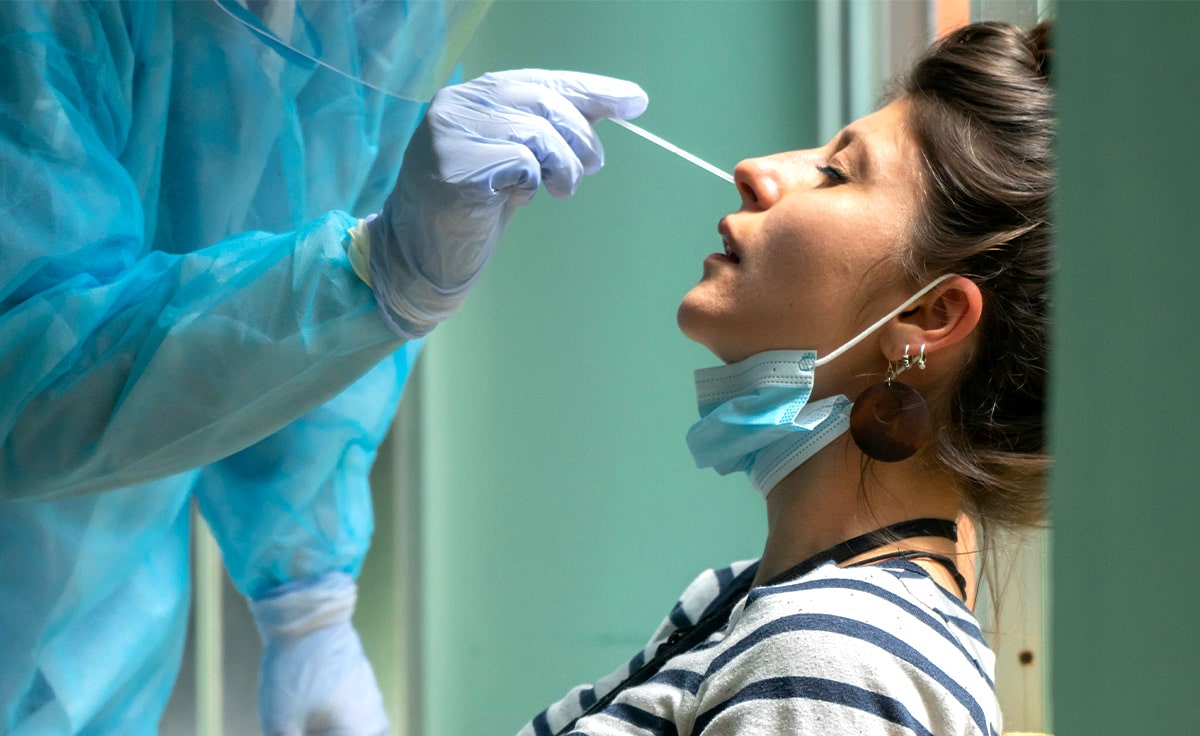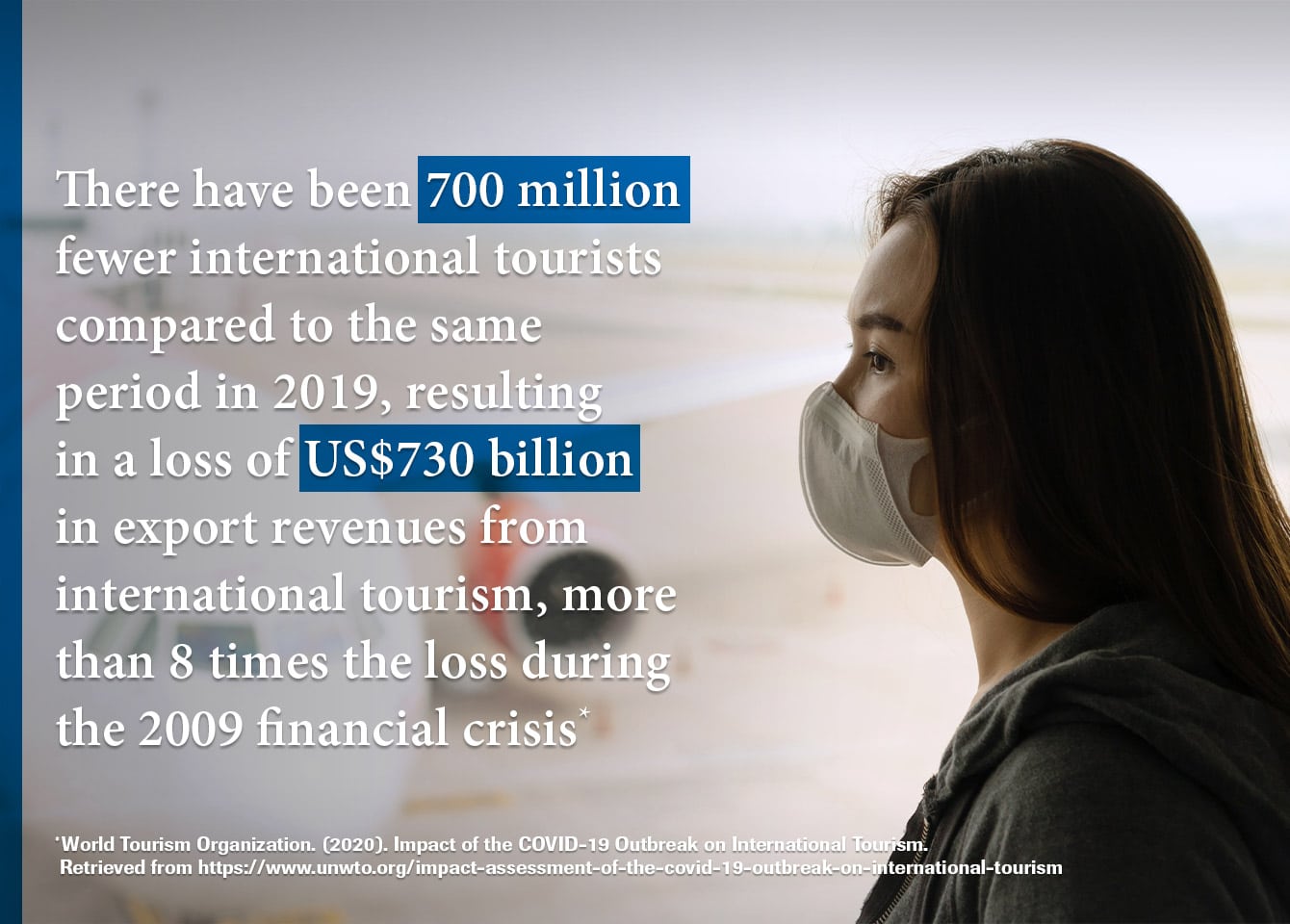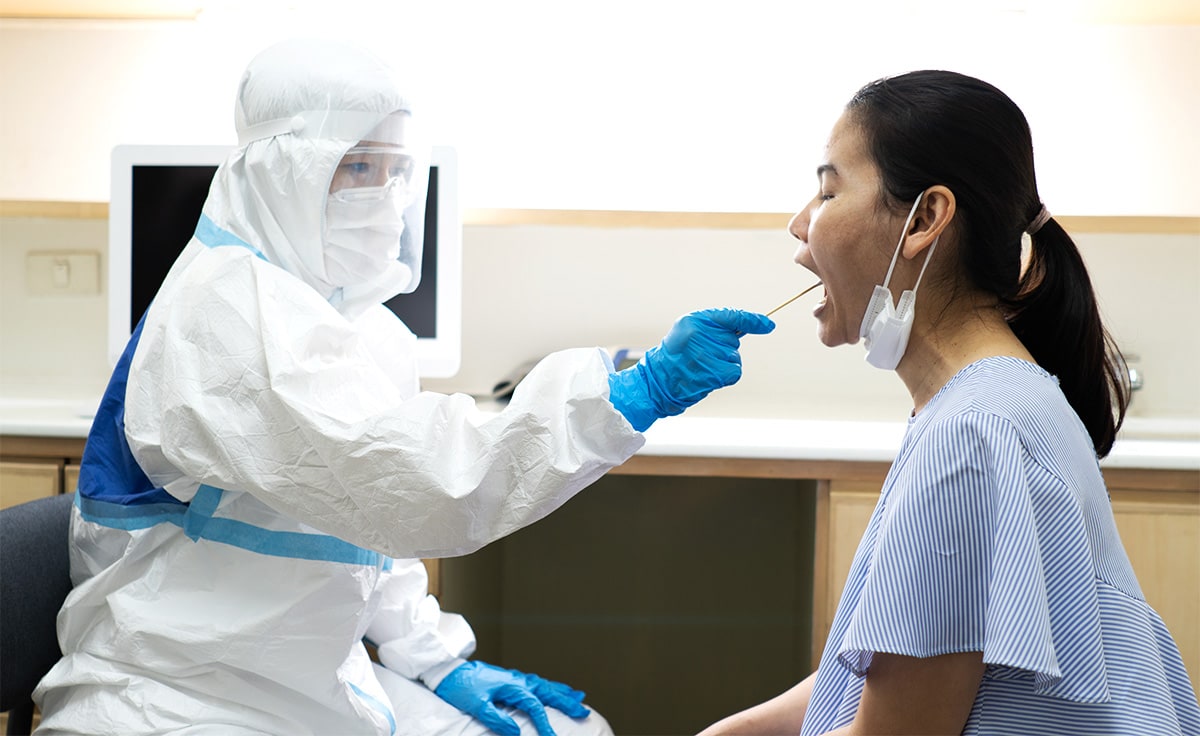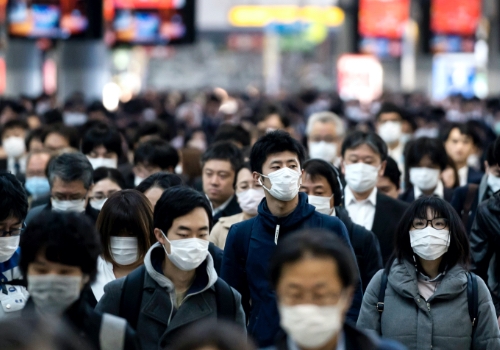According to a Pew Research Center analysis of border closure announcements and United Nations population data, roughly three billion people, or 39 percent, lived in countries with borders completely closed to non-citizens and non-residents as of April 20201.
Rapid and decisive action has been a critical determinant of success. Effective responses have involved early action and extensive testing, contact tracing, and physically isolating unwell patients, while acting with agility in a rapidly changing environment.

A woman undergoes COVID-19 swabbing. The world’s health systems have had to quickly ramp up testing.
The Cost of Economic Recovery
Attempting to maintain zero cases, as countries have seen, has negatively impacted economic growth and productivity — in some instances, setting economic progress back by years. The World Bank’s chief economist, Carmen Reinhart, expects full global economic recovery could take as long as five years2.
The cost of virus containment has proved to be a financial quagmire for many countries, leaving government leaders with an uphill task: balancing a public health response with economic recovery.
Even New Zealand, which was the first country in the world to effectively eliminate local transmissions, has found itself unable to ward off economic slowdown.
The tourism sector – which is New Zealand’s largest export industry in terms of foreign exchange earnings and directly employs 8.4 percent of the nation’s workforce3 – is struggling in the absence of overseas tourists.
Similarly, quarterly data released by the Singapore Tourism Board showed a sharp decline in international visitors and tourism earnings4. As a regional hub, reopening borders is essential to retaining the country’s aviation hub status and protecting jobs and the local economy.

Likely Surge in Cases Expected
Other countries like Korea, Taiwan, Australia and Vietnam which have also managed to contain the virus are now looking ahead to the next phase of pandemic management – economic recovery.
As nations around the world progressively reopen borders, health systems are preparing for a likely increase in cases. This time, they are hoping to avoid past mistakes, while policymakers ensure sustained surveillance and testing efforts are central to economic strategies.
Experts across Asia Pacific came together for a virtual forum hosted by the Saw Swee Hock School of Public Health at the National University of Singapore to discuss the current state of border control policies in the region, and the way ahead.
Its report, titled COVID-19 and Asia Pacific: Border Control and Path to Reopening, captures three key takeaways5:
1. Diagnostic testing remains central to the management of borders. While PCR testing is the most frequently used in border control management, countries are also evaluating the utility of rapid antigen tests as a faster and lower-cost alternative.
2. Gradual easing of restrictions is possible through careful risk management. Green lanes and safe travel zones can allow visitors to circumvent lengthy post-arrival quarantines and other requirements that deter travel, but many precautions are necessary.
3. Global collaboration is essential to drive greater reopening. Multilateral organisations are currently developing frameworks to support the easing of restrictions, including common standards and validation systems for test results and vaccine records.

A health worker in protective gear swabs a woman. Experts believe that diagnostic testing remains key to protecting protecting international borders.
Given the magnitude and complexity associated with the global pandemic, a multi-dimensional and concerted effort is necessary. Local decisions made in any country can easily have far-reaching implications for the rest of the world, thus requiring multilateral and global cooperation. As many countries explore the feasibility of immunity passports, at a minimum, governments will need to establish and align on a common framework for border management.
While shared standards are necessary, they should be considered in the context of local factors.
Nonetheless, as the report concludes, “Collective action presents the greatest opportunity for speedy resolution of thorny challenges in border control management and a smooth path to reopening6.”
References:
1Pew Research Center. (2020). More than nine-in-ten people worldwide live in countries with travel restrictions amid COVID-19. Retrieved from https://www.pewresearch.org/fact-tank/2020/04/01/more-than-nine-in-ten-people-worldwide-live-in-countries-with-travel-restrictions-amid-covid-19/
2Carmen Reinhart, Mundell-Fleming Lecture on recurring patterns of past debt and financial crises and possible parallels with the unfolding global crisis at the 21st Annual Research Conference. Retrieved from https://www.imf.org/external/mmedia/view.aspx?vid=6207555711001
3Statistics New Zealand. (2019). Tourism Satellite Account. Retrieved from https://www.stats.govt.nz/information-releases/tourism-satellite-account-2019
4Singapore Tourism Board. (2020). Tourism Sector Performance Q1 Report. Retrieved from https://www.stb.gov.sg/content/dam/stb/documents/statistics-marketing-insights/Quarterly-Tourism-Performance-Report/STB%20Q1%202020%20Tourism%20Performance%20Report%20-%20FINAL.pdf
5Saw Swee Hock School of Public Health. (2020). COVID-19 in Asia Pacific: Border Control and Path to Reopening. Retrieved from https://sph.nus.edu.sg/2020/10/covid-19-in-asia-pacific-border-control-and-path-to-reopening/
6Ibid.














